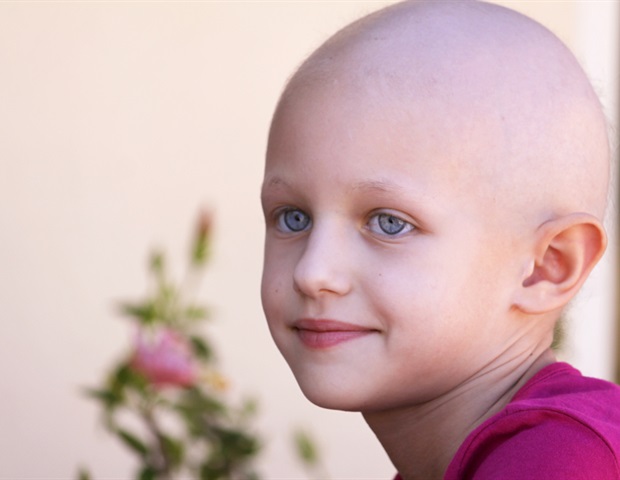Hyperdiploidy is a genetic condition observed in cancer cells, where the cells contain more chromosomes than usual. The condition is particularly prevalent in childhood B-cell acute lymphoblastic leukemia (B-ALL), the most common form of pediatric cancer. To bring clarity to the field, researchers at St. Jude Children’s Research Hospital worked to better define this type of ALL in the context of modern therapy to more accurately predict patient outcomes and guide treatment decisions. The findings were published today in the Journal of Clinical Oncology.
Currently, oncology centers worldwide use at least six different definitions of hyperdiploidy to guide treatment protocols, resulting in variable patient outcomes. While physicians agree that hyperdiploidy is associated with a generally favorable outcome, the exact definition is still debated. Establishing the most optimal classification of hyperdiploidy can standardize care for childhood B-ALL and ensure patients with this cancer receive only the necessary treatments, potentially reducing the side effects of chemotherapy while improving long-term outcomes.
Better predictions, improved treatment
The St. Jude researchers compared existing methods for defining hyperdiploidy, and they discovered that DNA index, a measure of total DNA in leukemic cells, could effectively classify and predict outcomes for hyperdiploid leukemia.
Hyperdiploidy definitions have historically been derived from the retrospective studies of previous protocols. By comprehensively comparing six different classification methods in the same patient cohort, we show that a simple system, such as the DNA index, is optimal for stratifying patients with a good prognosis. This approach remains applicable in modern studies with contemporary risk-directed therapies.”
Ching-Hon Pui, M.D., co-corresponding author, Departments of Oncology, Pathology and Global Pediatric Medicine
DNA index casts a wider net over the hyperdiploid patient population, making it a valuable starting point for those working in resource-limited settings that may have finite access to more expensive methods, such as whole-genome sequencing. This finding holds significance for medical centers around the world.
“The DNA index seems advantageous over other classification criteria because it captures a significant proportion of patients with excellent prognoses who are missed by a few other hyperdiploid definitions,” said co-corresponding author Jun J. Yang, Ph.D., Departments of Pharmacy and Pharmaceutical Sciences and Oncology.
Patients with good prognoses have specific drug sensitivities
While DNA index is highly informative of treatment outcomes, it has limitations -; it cannot identify the specific chromosomes that have been gained. This study also found that not all trisomies (extra chromosomes) are created equal, with some having a more significant impact on outcomes. Combining DNA index with more chromosome-specific approaches would be crucial in further individualizing therapy for this patient population.
“Hyperdiploidy is not monolithic. It is essential to identify the individual chromosome gains to better understand its effects,” Yang said. “The gain of specific chromosomes can result in varying drug sensitivity and resistance.”
In the study, researchers discovered an association between specific chromosomal gains and sensitivities to the anticancer drugs asparaginase and mercaptopurine in patients with favorable prognoses. Unlike previous studies focusing only on drugs used at initial diagnosis, this research also explored drugs administered later in treatment. This broader perspective provides valuable insight into tailoring treatments based on individual patient characteristics.
Taking a comprehensive look at leukemia drugs
“The significance of this study lies in its comprehensiveness. We have examined the spectrum of drugs used to treat ALL to identify those that are particularly effective for hyperdiploid ALL,” Yang said.
By thoroughly evaluating eight drugs and their specific therapeutic outcomes related to hyperdiploidy, the researchers have achieved the most comprehensive understanding to date. However, they acknowledge that there are still opportunities to improve.
The study’s findings regarding drug sensitivities suggest some patients may not need high doses of certain drugs for the treatment to be effective. As chemotherapy can lead to adverse effects, refining therapy to precise doses could significantly benefit patients. This improvement starts with understanding each patient’s genetic landscape.
“We are not only focused on enhancing therapies, but we also aim to de-intensify them to improve patients’ quality of life,” Pui said.
To boost the survival rate of acute lymphoblastic leukemia (ALL), the scientists determined where to look within the patient population.
“The best return on investment to maximize ALL survival is in the lowest-risk groups, where we safely cure the curable through reducing toxicities,” said first author Shawn Lee, M.D., of National University Hospital and formerly of St. Jude.
This study paves the way for future discussions about defining patient populations and advancing precision medicine for hyperdiploid pediatric cancer.
Authors and funding
The study’s other authors are Emily Ashcraft, Wenjian Yang, Kathryn Roberts, Lauren Rowland, Hiroto Inaba, Seth Karol, Sima Jeha, Charles Mullighan, Mary Relling, William Evans and Cheng Cheng of St. Jude; and Yoshihiro Gocho, formerly of St. Jude.
This study was supported by the Singapore National Medical Research Council Research Training Fellowship (MOH-000302), the National Institutes of Health (R35 CA197695, R01 CA264837, U01 CA264610, R35 GM141947, P30 CA021765 and P50 GM115279) and ALSAC, the fundraising and awareness organization of St. Jude.
Source:
Journal reference:
Lee, S. H. R., et al. (2023) Prognostic and Pharmacotypic Heterogeneity of Hyperdiploidy in Childhood ALL. Journal of Clinical Oncology. doi.org/10.1200/JCO.23.00880.
